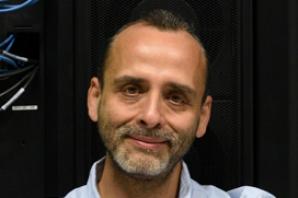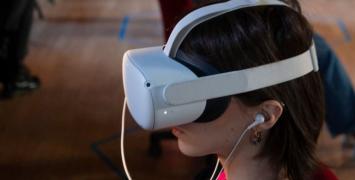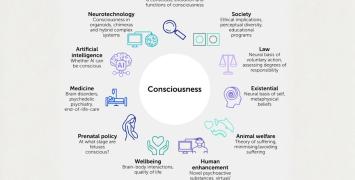Ethics and AI: tackling biases hidden in big data
How do artificial intelligence (AI) algorithms learn to predict and make decisions? Can we entrust them with decisions that affect our lives and societies? Are they neutral and as immune to societal imperfections as commonly thought? Nello Cristianini at the University of Bristol investigated challenges emerging from data-driven AI, addressing issues such as gender biases in AI algorithms, and shifts in people’s emotions reflected in social media content.

In information societies, data is considered to be the oil that fuels the rapid growth of artificial intelligence (AI) technologies. Machines learn from vast amounts of data by identifying patterns and applying statistical models for predicting most likely outcomes. It is data that enables AI to learn how to analyse, predict and make decisions.
Although we may think of data as inherently factual and neutral, the data from which algorithms learn can contain subtle biases. That is because it is being generated in our societies, and as such is not exempt from our prejudices and imperfections. Explaining how those data-driven technologies interact with societies is not easy and requires knowledge from more than just one domain of science.
In order to tackle these complex issues involving the interaction of AI and big data, ERC grantee Nello Cristianini, a professor of artificial intelligence at the University of Bristol, brought scholars from social sciences and humanities together with engineers. His project team developed new algorithms and data science methods, building the infrastructure to collect and analyse different types of data at a very large scale.
Watching this video you are accepting Youtube cookies policy
Studying media content and social biases
For example, Cristianini and his team processed 35 million articles from 150 years of newspapers in the UK. They collaborated with historians to interpret macroscopic patterns in these newspapers. ‘Media content does not just shape public opinion, but also machine behaviour. Therefore, it is important to have methods to study media systems at a vast scale’, says Cristianini.
Moreover, Cristianini and his team created methods for measuring different social biases – such as gender bias – in media content and AI algorithms. ‘After we successfully measured gender bias, our biggest question became whether we can remove it. And yes, my research group showed that we can’, adds Cristianini.
Cristianini highlights that their experience in eliminating gender bias could be applied to similar societal unfairness in various algorithms. For instance, when AI is used for pre-selecting candidates’ CVs, the system could be programmed to ignore any information indirectly related to race, gender and religion.
His research also explored questions beyond computational science. ‘We had the courage to work on the interface between social sciences, humanities and data science, which is one of the important frontiers of today’, says Cristianini, who also worked with philosophers and legal scholars to frame critical questions emerging from AI.
Measuring collective sentiment and seasonal patterns
Additionally, Cristianini and his team collaborated with neuroscientists to study patterns in people’s mood cycles reflected in aggregated social media content, aiming to understand why and when collective expression of emotions and psychological traits shift. To achieve that, the project team analysed a large amount of anonymous data collected from Twitter.
Scientists measured collective changes in people’s moods by counting the frequency of words that are associated with certain emotions, such as, for example, anger. Any change in the frequency of using those words would show a shift in anger. For instance, they examined Twitter content created during the crucial days of Brexit and the COVID-19 lockdown.
Cristianini points out that adverse events and news can quickly shift negative sentiment in social media conversations. By looking at past social media content, scientists also identified intriguing seasonal and daily patterns in users’ emotions. ‘The influence of people’s 24-hour circadian cycle and seasonality on their positive and negative sentiment was especially interesting to medical scientists working with us’, adds Cristianini.
Engaging with citizens, policymakers and other scholars
Knowing that their research and AI, in general, can be very abstract to most people, including experts in different disciplines, Cristianini and his team translated them into ideas and stories understandable to a non-technical audience.
For instance, they produced a series of outreach videos to present their cross-disciplinary work to citizens, policymakers, and scholars, addressing provocative questions such as ‘Can machines manipulate our behaviour and read our minds?’ In addition, as part of their engagement with policymakers, Cristianini spoke about AI at the Council of Europe and the European Parliament.
Besides enabling his interdisciplinary research and outreach activities, Cristianini highlights that the ERC grant was instrumental for building the team with knowledge from different science domains. ‘This grant allowed us to contribute to society by investigating ethical and technical challenges arising from AI and finding the common language between science disciplines to address those challenges. I am happy that the ERC recognised our work, opening up space for further research in this domain’, concludes Cristianini.
BIO
Nello Cristianini is a professor of artificial intelligence at the University of Bristol. He obtained a master degree in computational intelligence from the University of London and a PhD from the University of Bristol. He is the co-author of influential books on the theory of machine learning.






